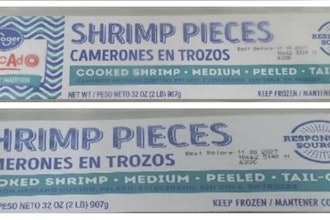WASHINGTON (AP) — Taking its first concrete step to streamline outdated restrictions on military exports, the U.S. moved to make it easier for American companies to sell aircraft equipment and parts to overseas customers.
The White House announced Friday it has notified Congress of plans to give the Commerce Department, rather than the State Department, authority to control the export of thousands of "dual-use" items that could be used either for military or commercial purposes. The goal is to simplify the export process for U.S. manufacturers competing in the global market by treating non-sensitive products differently than things like jet fighters and missile launchers.
Senior administration officials are painting the move as part of a broader effort to rebuild an export control structure leftover from the Cold War that is tough for business and tough for the government to enforce. Decades ago, these products were made specifically for military systems, and there was a serious risk of letting them fall into the wrong hands. These days, many products are interchangeable with commercial systems and widely available outside the U.S.
Under the current rules, items on the U.S. Munitions List are under the strict control of the State Department, where agents determine which allies and partner nations can purchase the products. But the State must treat the sale of a spare part — a bolt or a wing piece, for example — the same as an entire fighter jet.
The new rules take those less sensitive items off the Munitions List and hand authority for controlling them to the Commerce Department, which has a more flexible approval process. As an entity charged with promoting economic growth, the Commerce Department is also known for being more lenient in granting permission for products to be shipped out.
The White House said the move would not pose any additional risk.
Although the outline provided to Congress lists technical parameters for what will be removed from the list — not specific items — officials said things like rudders, fins and fuel tanks would no longer require State Department sign-off. Fully assembled engines, mission computers and radar equipment would remain on the Munitions List.
The aircraft-related changes are the first of what the White House said would be a series of changes to the 1970s-era export structure that President Barack Obama vowed in 2009 to reform. Exporters hailed the changes and said it would remove impediments such as the requirement that controls be maintained throughout the life of the product.
"You have foreign companies that are avoiding U.S. products" because it's too complicated to get approval to buy them, said Lauren Airey, who heads trade facilitation policy for the National Association of Manufacturers. "This allows U.S. companies to be competitive with their foreign companies."
A 2010 study from the association's Milken Institute estimated that a broader effort to modernize export controls could boost exports by nearly $57 billion per year by 2019.
The changes will be published publicly one month after Congress was notified on Thursday, and take effect 180 days later. In an accompanying executive order, Obama gave the State Department secondary authority to give licenses for items removed from the Munitions List. That way, a company that gets permission to sell an entire system, such as a fighter plane, won't have to get separate Commerce Department permission for the non-sensitive items that are part of the system.






















